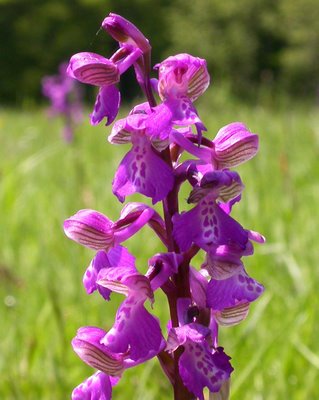
I noticed some large yellow blotches on the leaves of a lords-and-ladies plant,
Arum maculatum, today and found they were evidence of a rust fungus,
Puccinia sessilis, growing on the under surface. While looking at this under the microscope I noticed some tiny, red fly larvae browsing on the fungi. My friend Peter Chandler says these are almost certainly a species of
Mycodiplosis, a Cecidomyid (gall midge) genus. I am going to try and breed some through to see if they can be named to specific level.
There is a delightful book on microfungi by Thomas Brittain published in 1882. Brittain refers to
Puccinia sessilis as the wake-robin clustercup,
Aecidium ari, and says it was quite rare in the area he covered in north west England and Wales.
'Wake-robin' used for arums is one of those old English terms that are still in wide use in North America but have largely died out here.
Brittain's book is on-line
here.
 One of the first brambles to flower in our area is a species described by the BSBI referee for this group as "probably a luxuriant form of Rubus nemorosus." (Brambles, though they generally look fairly similar, have been divided up by botanists into many microspecies).
One of the first brambles to flower in our area is a species described by the BSBI referee for this group as "probably a luxuriant form of Rubus nemorosus." (Brambles, though they generally look fairly similar, have been divided up by botanists into many microspecies).






















